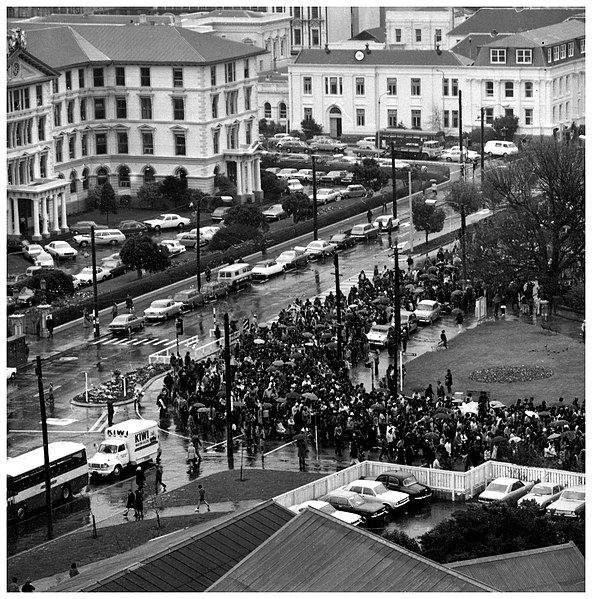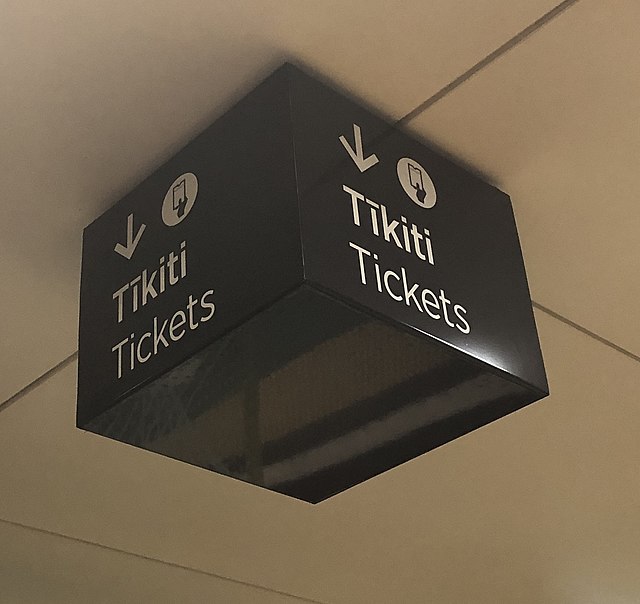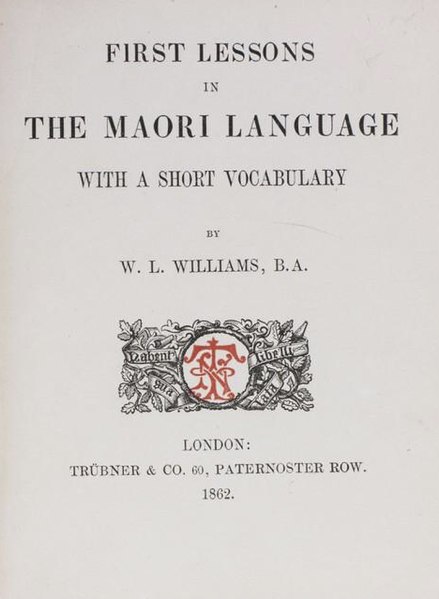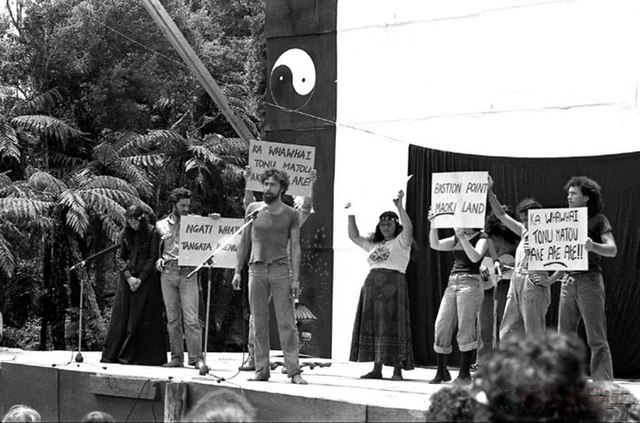The Māori renaissance, as a turning point in New Zealand's history, describes a loosely defined period between 1970 and the early 2000s, in which Māori took the lead in turning around the decline of their culture and language that had been ongoing since the early days of European settlement. In doing so, social attitudes towards Māori among other New Zealanders also changed.
Āpirana Ngata, 1934
Māori Land March – 13 October 1975, outside Parliament in Wellington
Māori, or te reo Māori, commonly shortened to te reo, is an Eastern Polynesian language and the language of the Māori people, the indigenous population of mainland New Zealand. A member of the Austronesian language family, it is related to Cook Islands Māori, Tuamotuan, and Tahitian. The Maori Language Act 1987 gave the language recognition as one of New Zealand's official languages. There are regional dialects.
Prior to contact with Europeans, Māori lacked a written language or script. Written Māori now uses the Latin script, which was adopted and the spelling standardised by Northern Māori in collaboration with English Protestant clergy in the 19th century.
Bilingual sign at railway station in Auckland, New Zealand
"First Lessons in the Maori Language", 1862, by W. L. Williams, third Bishop of Waiapu
He Taonga Te Reo – a celebration of Maori Language poster, Wellington Public Library (1995)
Bastion Point land rights activists with Māori-language signs






